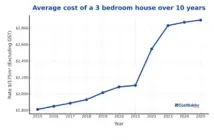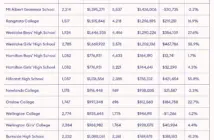The recent flurry around the release of CV values for Auckland based on data more than 12-months old appears to have prompted leading information provider Cotality to join the fray of up to the minute value suppliers with an interactive tool Mapping the Market . The June 2025 edition shows stand-alone houses are beginning to regain ground in many suburbs while growth across townhouses and flats has remained more subdued and uneven.

Kelvin Davidson, Chief Property Economist at Cotality NZ, says the latest suburb-level breakdown offers a valuable view of emerging trends when it comes to buyer behaviour and affordability constraints.
“Overall, we’re seeing some green shoots across the board. But stand-alone houses are perhaps tending to lead the early recovery in terms of both consistency and scale of value gains,” Davidson says.
“More affordable detached housing seems to be appealing to buyers again, supported by easing mortgage rates. In contrast, values for townhouses and flats are a bit more hit-and-miss.”
Houses lead the way in value gains
Across the three months since March, 62 percent of suburbs (1,652 out of 2,661) recorded flat or rising median values for standalone houses, with 22 percent of those experiencing an increase of at least two percent.
Elderslie (Waitaki), Ngataki (Far North), and Evansdale (Dunedin) were among the 78 suburbs with house value growth of at least five5 percent, while Dunrobin and Tawanui (Clutha), and Mawheraiti (Buller) also made strong gains — all with median values below $650,000.
In the main centres, strong results were recorded in Dunedin, as well as Kelburn in Wellington (up 4.1 percent), Temple View in Hamilton (3.0 percent), Little River near Christchurch (3.1 percent) and Bethells Beach in Auckland (3.0 percent).
Townhouses and flats trail behind
In comparison, the recovery among townhouses and flats has been more restrained. Just over half of suburbs (54 percent) saw values hold steady or rise, and only 16 percent experienced growth of two percent or more.
While some areas posted notable increases – including North West Bay (Marlborough) and Whangarei Heads – only 43 suburbs saw townhouse values rise by at least five percent, and just 12 exceeded seven percent.
Among the main urban areas, standout results included Waikouaiti near Dunedin (up 6.8 percent), Chedworth in Hamilton (4.8 percent), Onetangi in Auckland (4.2 percent) and Eastbourne near Wellington (3.9 percent).
However, declines were still not gone altogether. Forty-two suburbs recorded drops of three percent or more in townhouse values, including Poike (Tauranga), Wakari (Dunedin), and Pukete (Hamilton).
A patchy recovery ahead
Davidson says the emerging split between property types is nothing major yet, but some differences could be a reflection of shifting buyer preferences and affordability pressures.
“Detached houses, particularly in smaller and more affordable suburbs, seem to be where the early recovery is taking hold,” he says.
“Townhouses and flats aren’t falling away but haven’t risen on such a widespread basis yet either. In some locations, such as Auckland, this will more than likely reflect the large pipeline of new developments.”
“While the market downturn appears to be behind us, the recovery in 2025 is far from uniform. There are plenty of challenges still in play, from weak economic growth to stricter debt-to-income rules. But overall, we’re tracking in a cautiously upwards direction.”
Explore the full interactive tool here: www.corelogic.co.nz/our-data/mapping-market



